A marble table is more than just a piece of furniture; it’s a timeless symbol of elegance and refinement. Its smooth, lustrous surface adds a touch of sophistication to any room. However, with regular use and exposure to the elements, marble tables can lose their shine and develop unsightly blemishes. Wax or glue on the table can make the condition worse. That’s where the art of polishing comes in—a technique that can revive the splendor of your marble table and restore its original beauty. Let’s see how to polish a marble table further in the article.
In this article, we delve into the world of marble table care and explore the essential steps to properly polish this exquisite material. From understanding the characteristics of marble to selecting the right tools and products, we will guide you through a comprehensive process that will leave your marble table gleaming like new. By mastering these techniques, you can ensure the longevity and pristine appearance of your marble table, making it a cherished centerpiece in your home for years to come.

Know the Types of Marble Tables:
Marble tables are coveted for their luxurious appeal and timeless beauty, making them a popular choice for interior design enthusiasts. However, not all marble tables are created equal. The world of marble offers a wide array of options, each with its own unique characteristics and visual appeal.
Polished:
Polished marble is a sight to behold; its smooth, reflective surface gleams with elegance and grace. Whether it adorns countertops, floors, or decorative accents, polished marble is a timeless choice that brings a touch of luxury to any space. The process of polishing marble involves meticulous care and attention to detail, resulting in a stunning finish that showcases the natural beauty of the stone.

Honed:
Honed marble exudes a distinct charm with its soft, matte finish. Unlike its polished counterpart, honed marble showcases a more subtle and understated beauty. The honing process involves gently grinding the marble surface to achieve a smooth, flat finish without a glossy shine. This finish offers a sophisticated, organic look that is favored for its timeless appeal and versatility in various design styles.
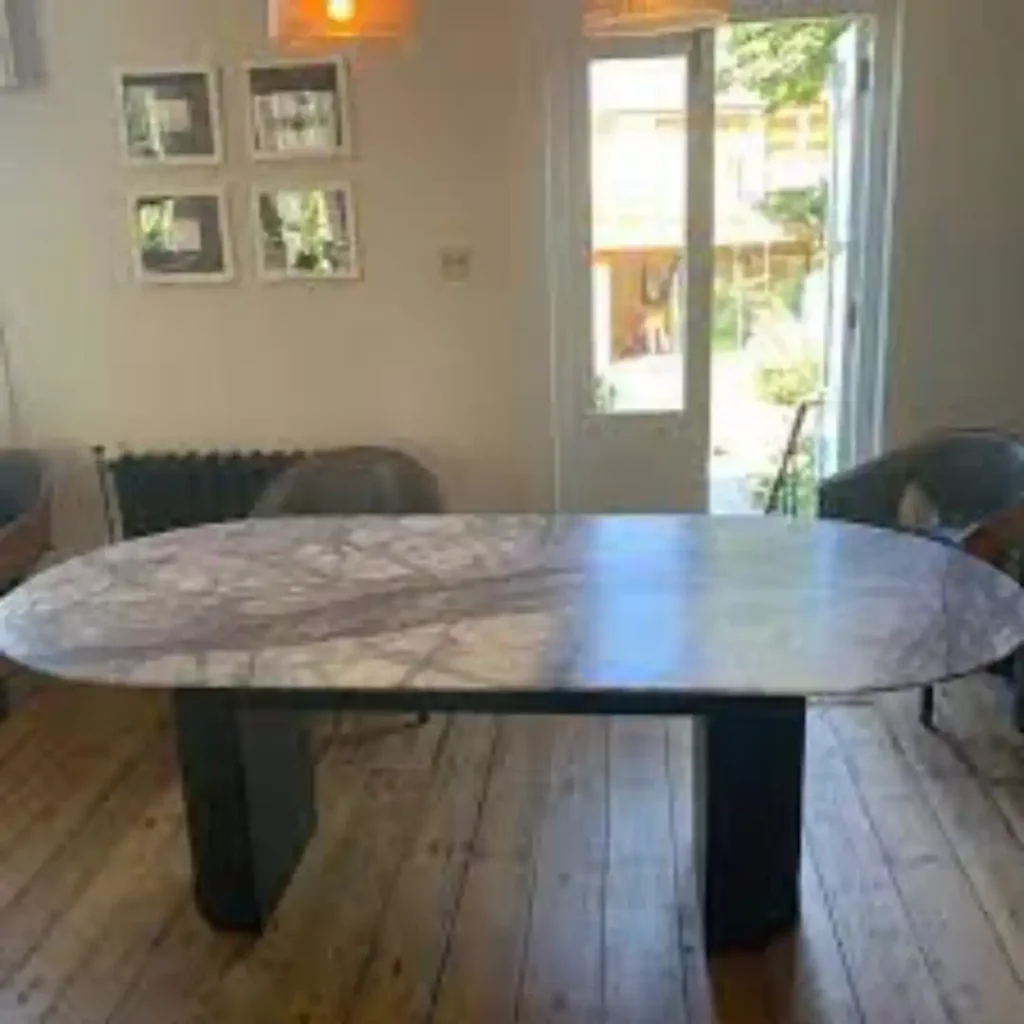
Necessary Supplies to Make a Marble Table Shine:
To bring out the radiant beauty of a marble table, having the necessary supplies at hand is essential. With the right tools and products, you can restore and maintain the lustrous shine that makes marble so captivating. From specialized cleaning solutions to polishing pads and sealants, each item plays a crucial role in the process of making a marble table shine.
Water:
Water serves as a versatile tool in the cleaning and polishing process, helping to restore the natural luster and beauty of marble surfaces. Whether used in combination with gentle cleaning solutions or as a standalone method, water is a key ingredient for achieving a radiant finish.
Polishing Compound:
A specialized polishing compound is designed to remove scratches, imperfections, and dullness from the surface of the marble tabletop, restoring its natural brilliance.
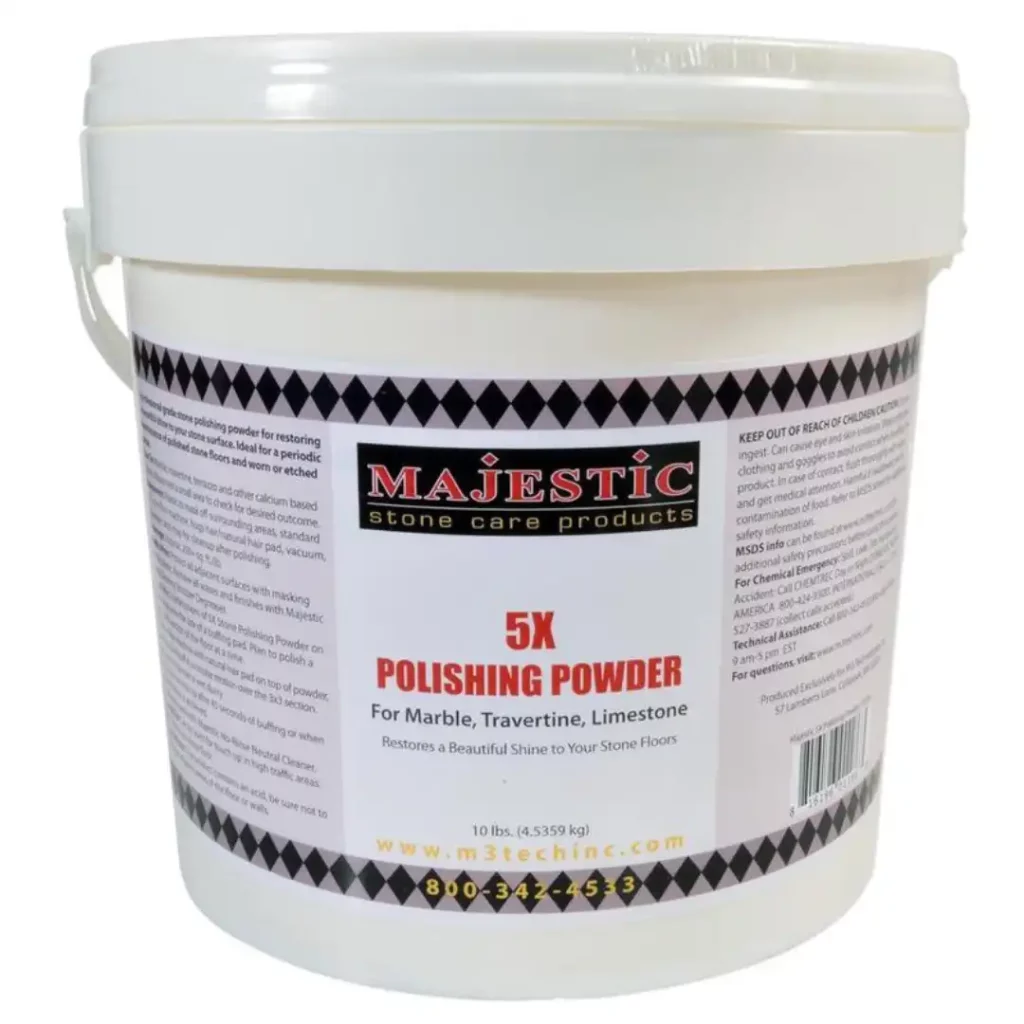
Marble Sealant:
A marble sealant forms a protective barrier on the surface of the table, guarding it against stains, moisture, and other potential damage. This sealant acts as a shield, preventing substances from penetrating the porous nature of marble and ensuring its shine and integrity are maintained for years to come.
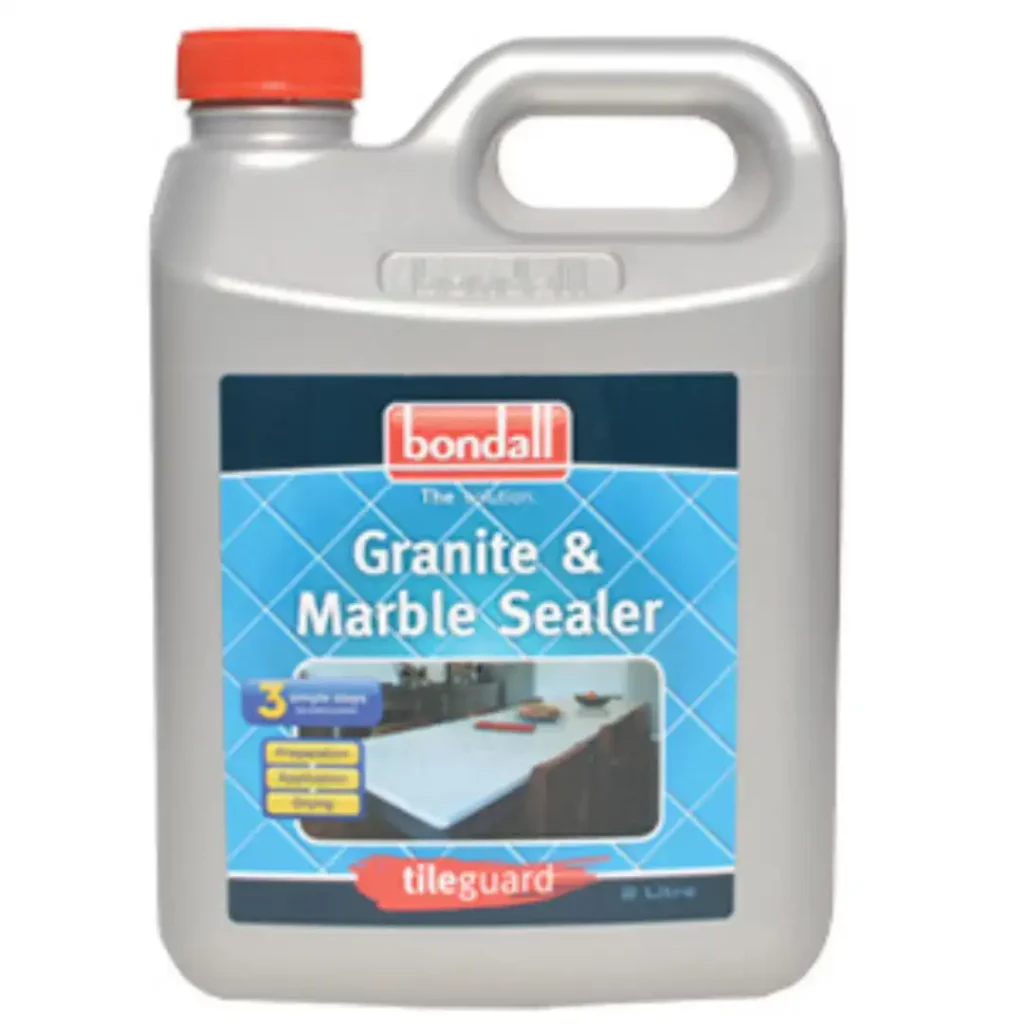
Plastic Wrap:
It can be a surprisingly useful tool in certain situations. Plastic wrap can be employed as a protective barrier during various stages of marble care, such as cleaning, polishing, or applying sealants.
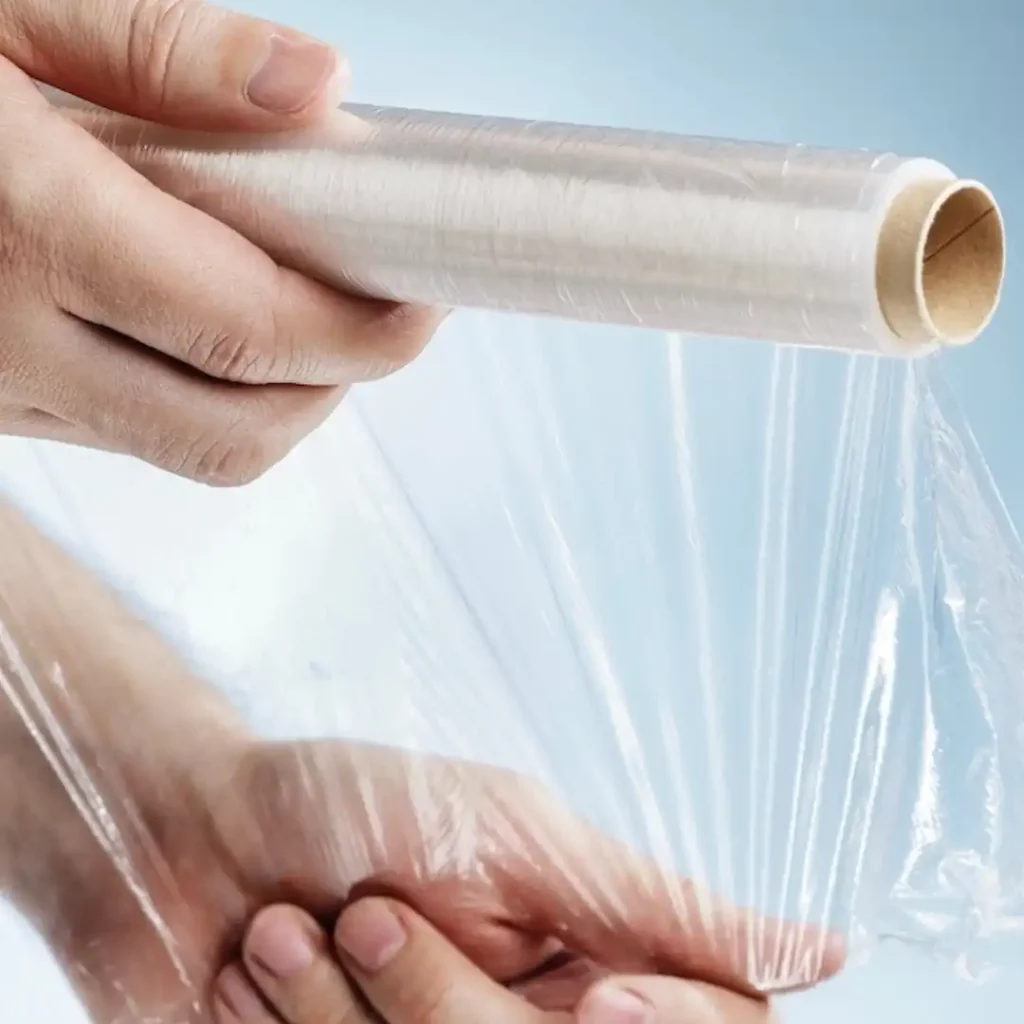
Ammonia:
Ammonia is a powerful cleaning agent. When used appropriately and in the right concentration, ammonia can effectively remove dirt, grime, and stubborn stains from the surface of marble. Its alkaline properties make it capable of cutting through grease and residue, providing a deep and thorough clean.

Baking Soda:
It’s a versatile and readily available household ingredient with gentle yet effective abrasive properties and is a natural choice for cleaning and removing stains from marble surfaces.

Hydrogen Peroxide:
With its powerful oxidizing properties, hydrogen peroxide can tackle tough stains, discoloration, and grime on the surface of marble and refinish marble table tops. It serves as a non-toxic alternative to harsh chemical cleaners, making it a preferred choice for those seeking a more environmentally friendly approach to marble care.
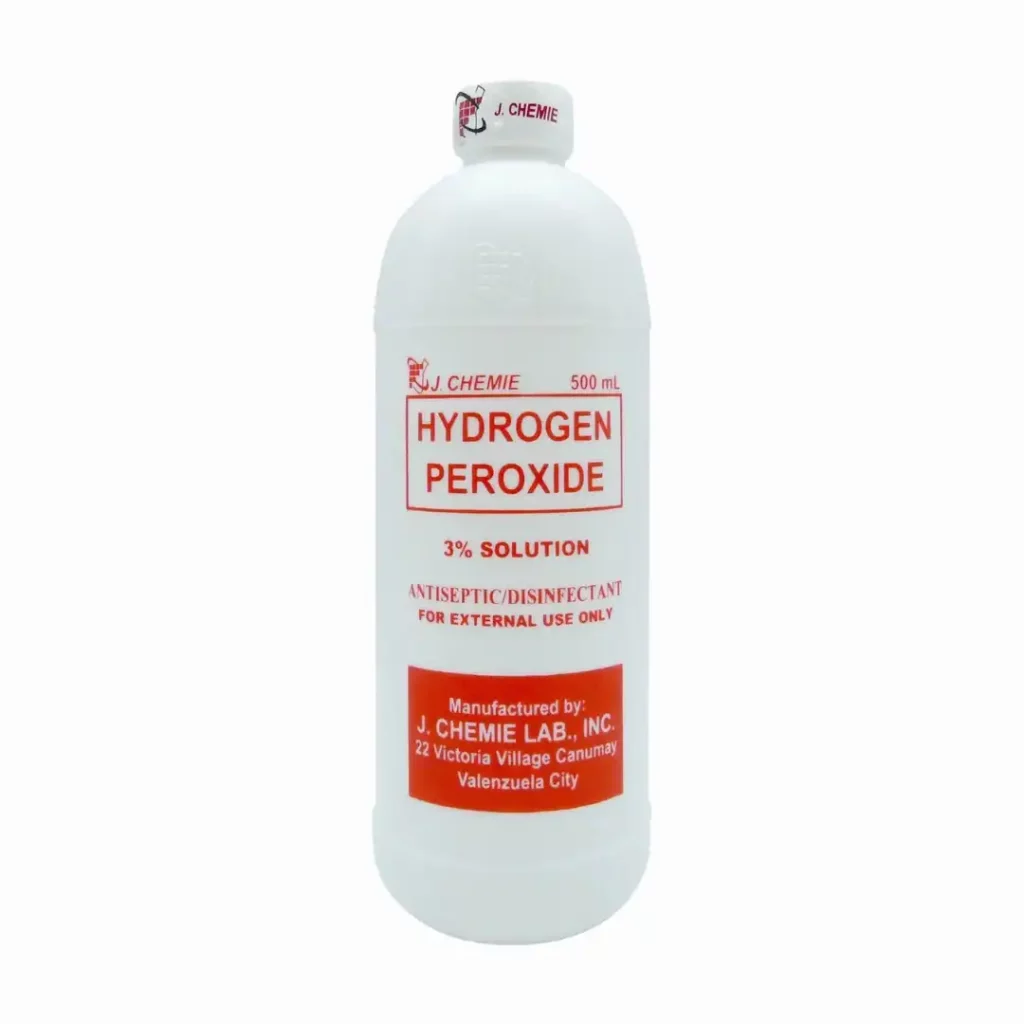
Microfiber Cloths:
Its unique composition of ultra-fine synthetic fibers makes it ideal for gently cleaning and polishing delicate surfaces like marble. Unlike traditional cotton or paper towels, microfiber cloths effectively trap dust, dirt, and particles without leaving behind lint or scratches.
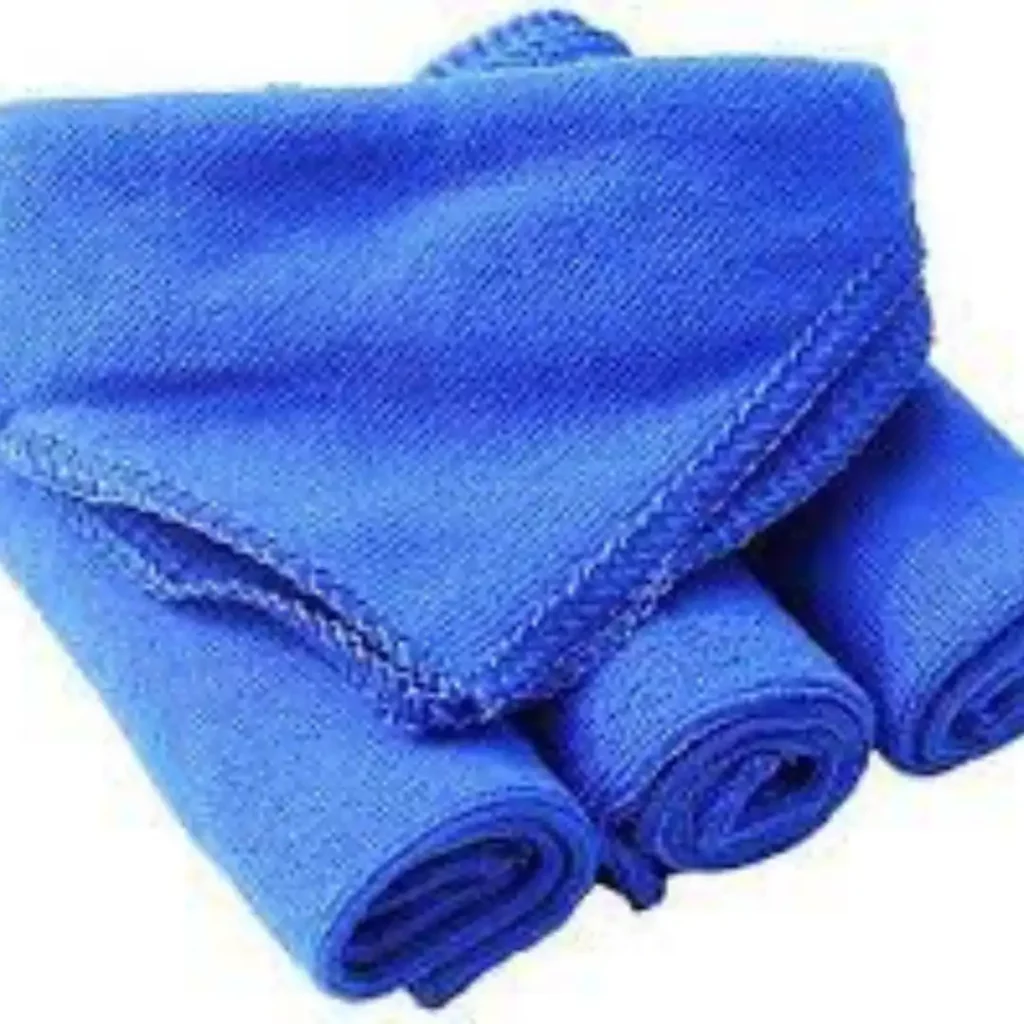
Mild Detergent:
A mild, gentle detergent can effectively remove everyday dirt, smudges, and spills from the surface of marble without causing damage or leaving behind residue.
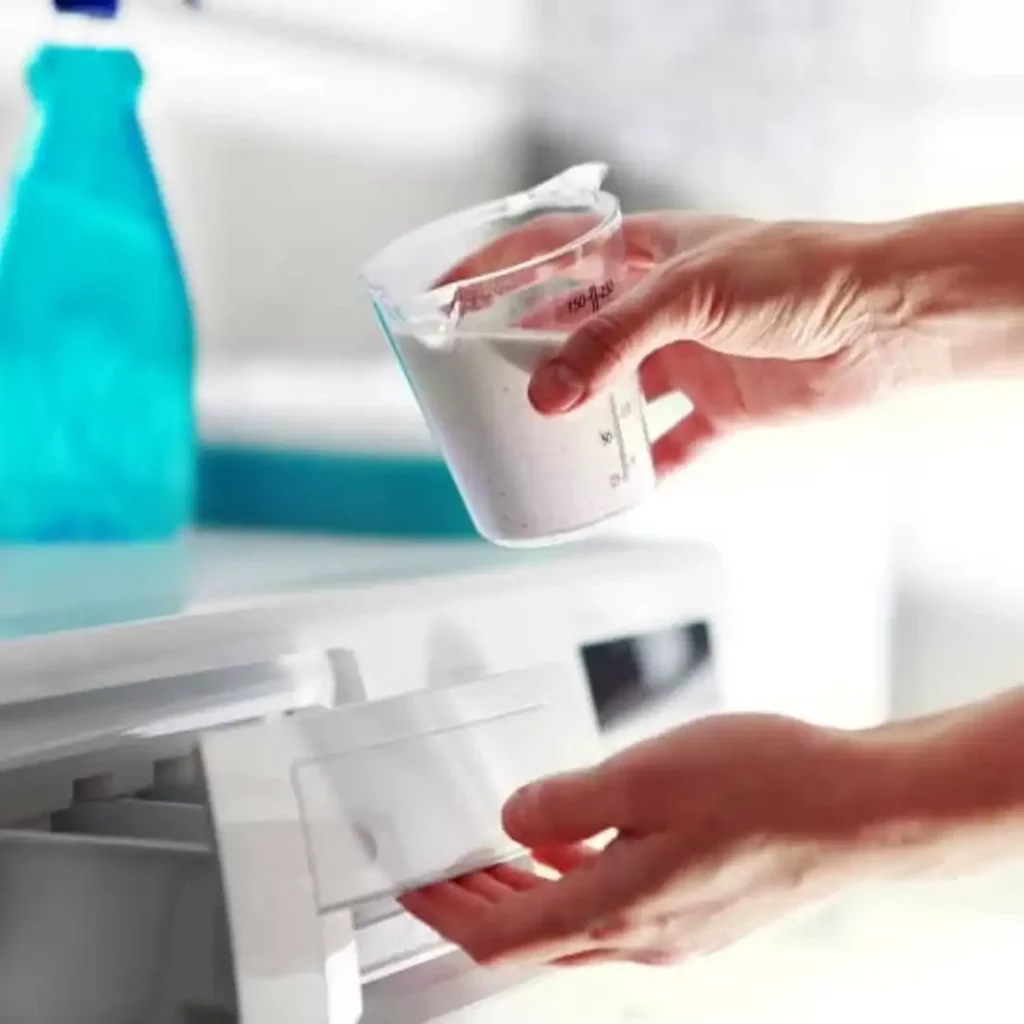
Poultice:
A poultice is a paste-like mixture made from various absorbent materials and a specialized stain-removing agent. This powerful combination helps draw out and lift deep-seated stains from the pores of the marble, restoring its original color and shine.
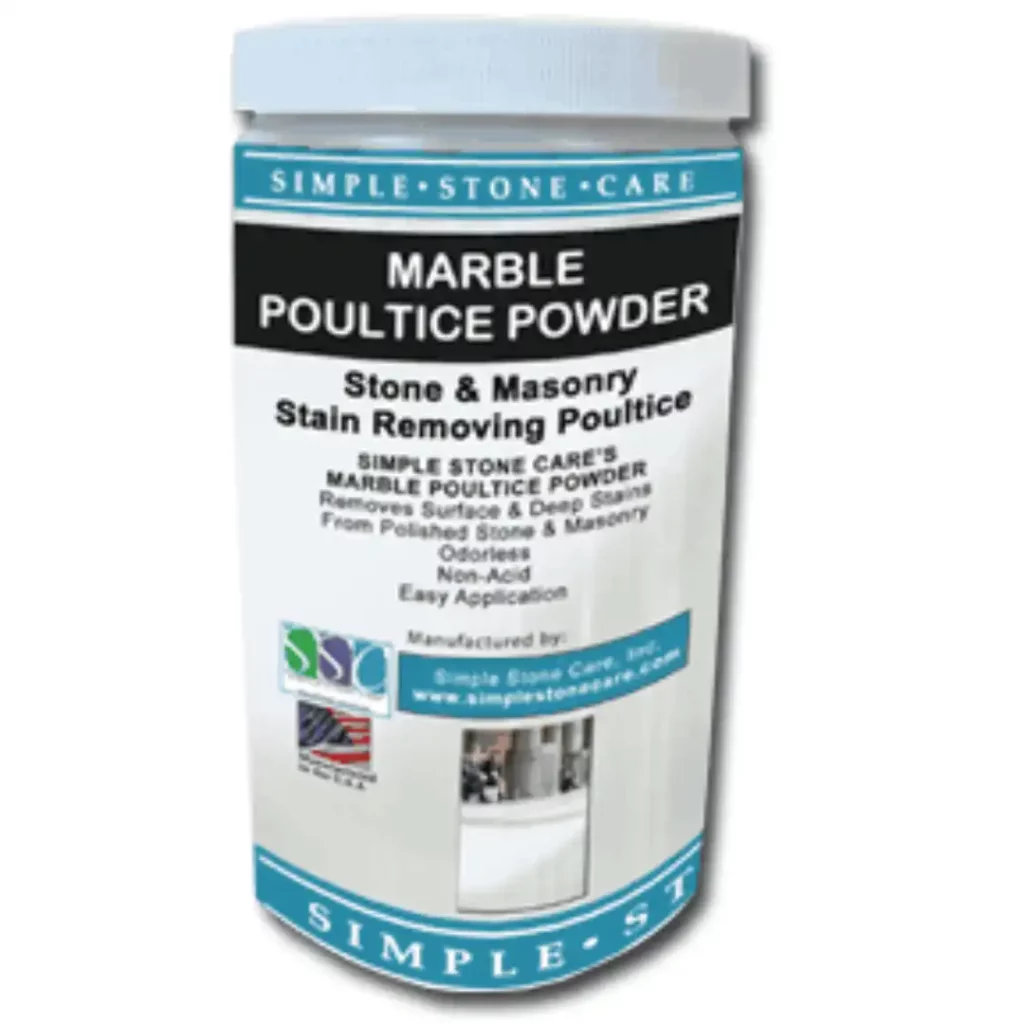
Polisher:
Designed specifically for polishing and buffing surfaces, a polisher utilizes various techniques, such as rotating or oscillating motions, to bring out the natural luster of the marble. With the right polishing pads and techniques, a polisher can effectively smooth out imperfections, remove scratches, and enhance the overall appearance of the marble.

Tape:
It can serve a practical purpose in certain situations. From protecting the edges and corners of the table during cleaning and polishing to creating clean, straight lines when applying sealants or paint, the tape can help ensure precision and prevent accidental damage to the marble surface.
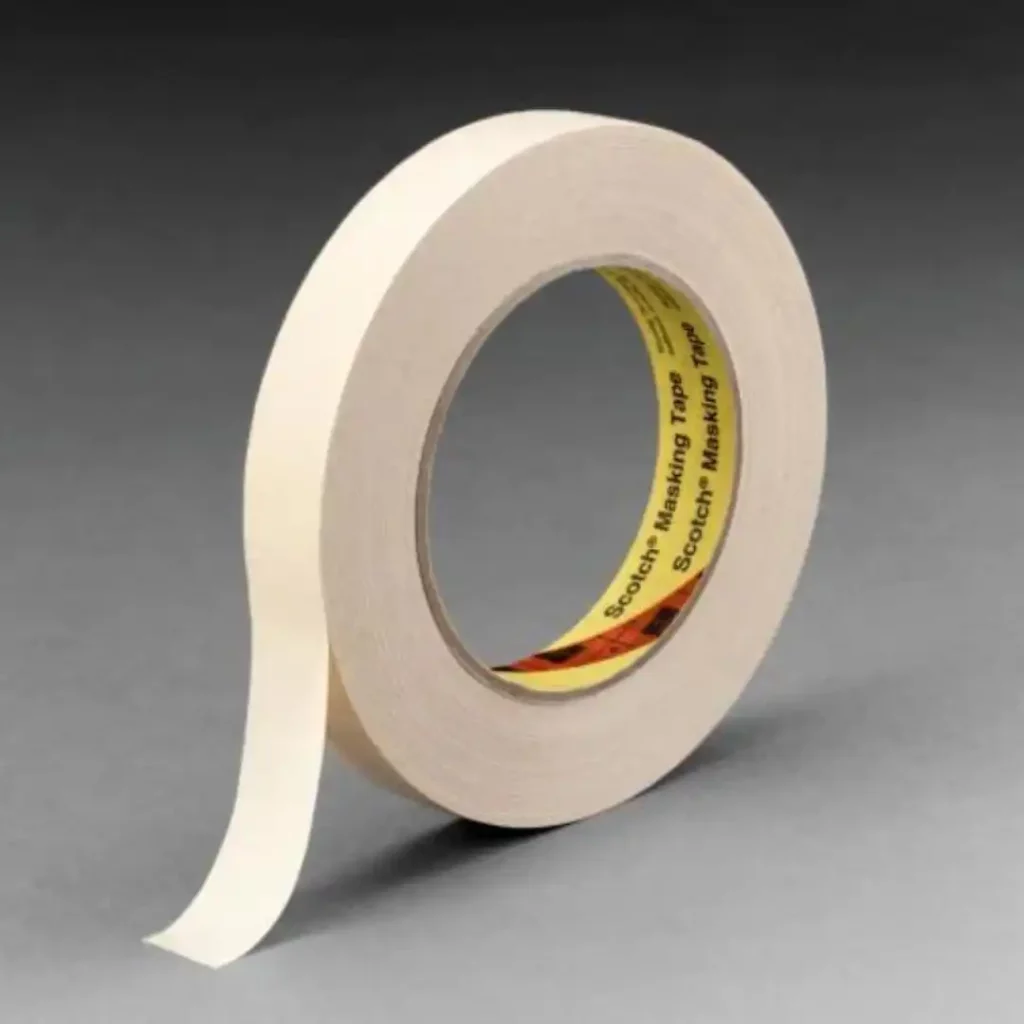
How to Polish a Marble Table? (Methods and Steps):
Maintaining the pristine appearance of a marble table requires regular polishing to restore its natural shine and luster. Polishing a marble table involves employing specific methods and following a systematic approach to ensure optimal results. We are now informing you about three popular methods for shining your marble table.
- The Polutice Method
- The Polishing Compound Method
- The Marble Sealant Method
The Poultice Method:
Steps to polish a marble table with the Poultice Method:
- Use painter’s tape to carefully tape off the edges and corners of the marble table, covering any adjacent surfaces that you want to protect from the poultice and potential damage.
- In a small bowl, combine the absorbent material and the stain-removing agent(like mild detergent) to create a thick paste. Follow the instructions provided by the manufacturer or use a 1:1 ratio as a general guideline.
- After the solution has had time to work, use a soft-bristled brush or a microfiber cloth to gently scrub the areas.
- Using a plastic spatula or a cloth, spread the poultice mixture evenly over the stained areas of the marble table. Ensure that the layer is about 1/4 to 1/2 inch thick, completely covering the stains.
- Place a piece of plastic wrap over the poultice, extending it beyond the edges of the applied mixture. Secure the plastic wrap in place with masking tape, creating an airtight seal over the poultice.
- Let the poultice mixture sit undisturbed on the marble table for at least 24 to 48 hours, allowing it to dry and work its magic on the stains.
- Once the drying time is complete, carefully remove the plastic wrap and the dried poultice mixture from the marble table using a plastic scraper or spatula.
- Wipe down the marble table with a clean, damp cloth to remove any remaining poultice residue.
The Polishing Compound Method:
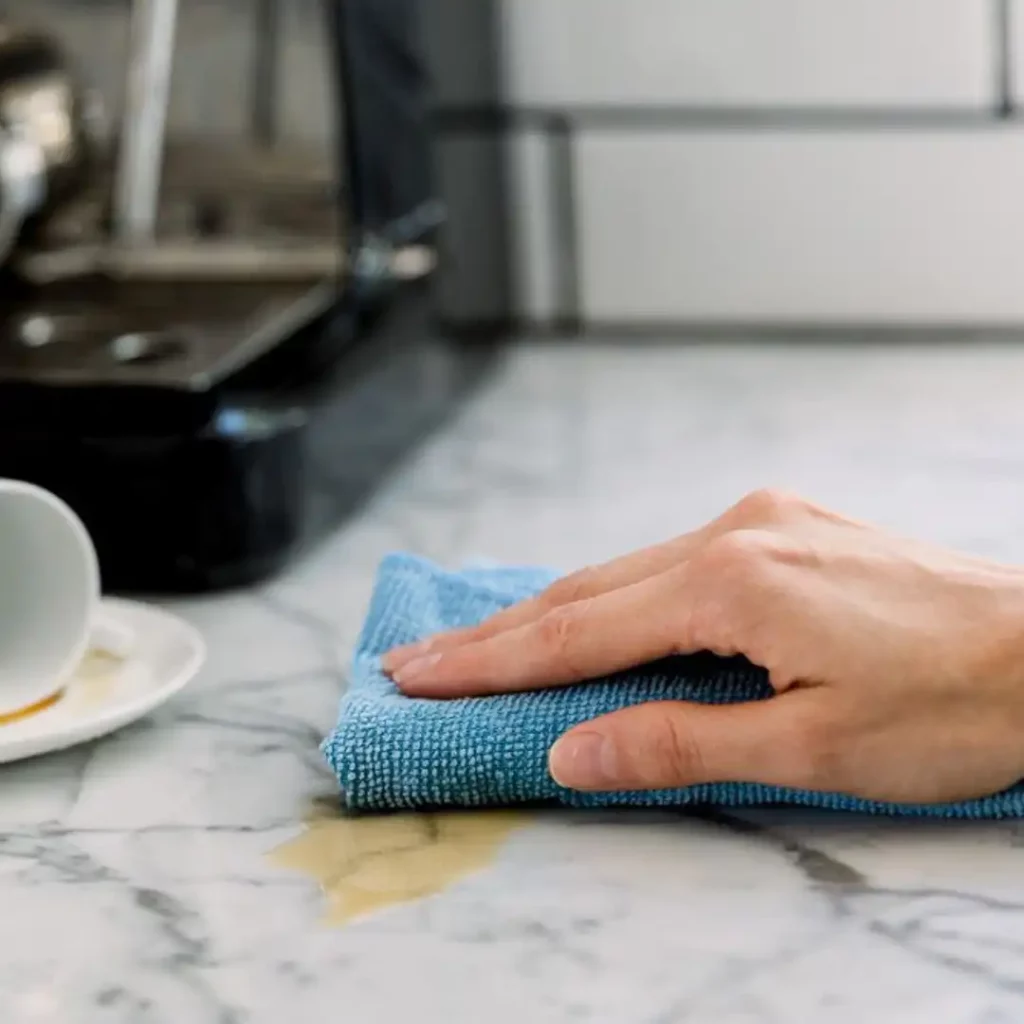
Steps to polish a marble table with the Polishing Compound Method:
- Carefully read the instructions provided on the container of the polishing compound. Look for guidance on the correct amount of compound to use based on the size of your marble table.
- Clear the surface of the marble table of any items or debris. Clean it thoroughly with a mild detergent and water solution.
- Take a small amount of the polishing compound and apply it to the marble table. Begin with a small area or a discrete spot to test the compound’s compatibility and results.
- Use a soft cloth or pad to spread the polishing compound evenly over the marble surface. Apply gentle pressure and work in circular motions to ensure complete coverage.
- After polishing the entire marble table, use clean microfiber cloths to remove any excess polishing compound from the surface. Wipe in gentle, circular motions to ensure a thorough cleaning.
- Clean the marble table with a damp cloth to remove any remaining residue from the polishing compound.
- Use a fresh, clean microfiber cloth to give the marble table a final buffing. This will help enhance the shine and smoothness of the surface and remove any last traces of residue.
The Marble Sealant Method:

Steps to polish a marble table with the Marble Sealant Method:
- Gather a marble sealant or impregnator specifically designed for protecting and enhancing marble surfaces
- Hold the marble sealant container and spray a small amount of the sealer directly onto the microfiber cloth.
- Using the microfiber cloth, begin spreading the sealant onto the marble table in smooth, even strokes. Work in small sections, ensuring complete coverage while avoiding excessive pooling or dripping.
- Depending on the specific instructions provided, you may need to apply multiple coats of the sealant. Allow each coat to dry according to the recommended drying time before applying the next coat.
- After applying the desired number of coats, use a clean and dry microfiber cloth to gently remove any excess sealant from the surface.
- Leave the marble table undisturbed for the prescribed drying and curing time mentioned in the instructions.
- After the recommended time, gently wipe off any excess sealant using a clean cloth.
- Let the marble table dry properly. Wait for it.
You can watch this-
Things to Remember:
When it comes to polishing a marble table, there are a few essential factors to keep in mind. Proper cleaning, the use of specialized marble polish, and gentle application techniques are key to achieving a beautiful, glossy finish.
Don’t Use Acidic Cleaning Solutions on Marble:
One crucial thing to remember when polishing a marble table is to avoid using acidic cleaning solutions. Marble is a natural stone that is susceptible to damage from acidic substances. Acidic cleaners, such as vinegar, lemon juice, or citrus-based cleaners, can etch the surface of the marble, leaving dull spots or marks that are difficult to remove.
Spot-test is a MUST:
Absolutely! Spot testing is an essential step that should never be skipped when polishing a marble table. Marble can have varying compositions and finishes, and different cleaning or polishing products may react differently with it.
Before applying any cleaning or polishing solution to the entire surface, it is crucial to test it on a small, inconspicuous area of the marble table. This spot test allows you to observe the effects of the product on the marble, including any potential discoloration, etching, or damage.
Want to Transform Your Marble? Call in a Professional:
If you’re looking to transform your marble table type and want the best results, it’s often advisable to call in a professional. Marble is a delicate and valuable material, and skilled professionals have the expertise and specialized equipment to handle the job with precision and care.
Professional marble restoration experts understand the intricacies of working with marble and can assess the specific needs of your table. They have the knowledge and experience to determine the appropriate cleaning and polishing methods for your marble’s unique characteristics, ensuring a beautiful and long-lasting result.
Have a Wooden Floor? Tape the Edges:
When working on refinishing or painting a wooden floor, it is good practice to tape the edges before you begin. Taping the edges helps protect adjacent surfaces, such as walls or baseboards, from accidental spills, drips, or brush strokes.
Don’t Apply the Polisher at Once:
To achieve optimal results when polishing a marble table, avoid applying the polisher all at once. Instead, work in small sections, ensuring even application, better control, and preventing drying or residue issues.
Don’t Buff the Wet Marble:
Avoid buffing wet marble, as it can lead to watermarks, streaks, and an uneven finish. Wait for the marble to fully dry before starting the buffing process to achieve the desired shine and prevent potential damage.
Don’t Let the Sealant Dry Fully:
When applying a sealant to a wooden floor, it’s crucial not to let the sealant dry fully before taking appropriate action. If the sealant dries completely, it may cause unevenness or a rough texture. Follow the manufacturer’s instructions to ensure the sealant is properly applied and allowed to cure without drying excessively.
Conclusion:
Polishing a marble table properly involves several important steps. Begin by cleaning the surface and performing a spot test. Use a specialized marble polish, applying it gently in small sections. Buff the surface after allowing the polish to sit. Remember to handle marble with care and establish a regular maintenance routine for long-lasting beauty.
FAQ:
What are the benefits of polishing a marble table?
Polishing a marble table enhances its aesthetic appeal, bringing out the natural beauty of the stone with a glossy finish. Polishing helps protect the surface by reducing the visibility of scratches, stains, and imperfections.
What materials do I need to polish a marble table?
To polish a marble table, you will need a few key materials: a specialized marble polish designed for use on marble surfaces and a soft, lint-free, or microfiber cloth or a specialized marble polishing pad.
What is the best method for polishing a marble table?
The best method for polishing a marble table involves using a specialized marble polish and working in small sections. Apply the polish gently using a soft cloth or marble polishing pad in circular motions, allowing it to sit for the recommended time before buffing the surface to reveal a beautiful, glossy finish.
Can I use household cleaners to polish a marble table?
It is generally not recommended to use household cleaners, especially acidic or abrasive ones, to polish a marble table. These cleaners can damage the marble surface, causing etching, discoloration, or dulling of the finish.
How often should I polish my marble table?
As a general guideline, polishing a marble table every 6 to 12 months is often sufficient for maintaining its shine and protection.
Is it safe to use acidic substances to clean a marble table?
No, it is not safe to use acidic substances to clean a marble table. Acidic cleaners, such as vinegar or citrus-based cleaners, can etch and damage the marble surface, leading to permanent marks and dullness.
How can I protect my marble table from damage?
To protect your marble table from damage, use coasters or placemats to prevent direct contact with hot or abrasive objects. Wipe spills promptly, avoid using acidic or abrasive cleaners, and establish a regular cleaning and maintenance routine.



